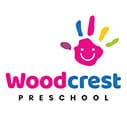STEAM Education in Preschool
What is STEAM?
STEAM stands for science, technology, engineering, art, and math. It may seem a bit lofty to be talking about all of this real-world stuff, but young children are amazing at building, innovating, dreaming, and using mathematical principles through many activities and toys in the classroom.
- Science encourages investigation and answering questions, often involving experimentation.
- Technology refers to using simple tools like crayons and rulers, as well as more complex ones like microscopes and computers.
- Engineering refers to recognizing problems and testing solutions.
- Arts encourage creativity and allow children to illustrate concepts they are learning.
- Mathematics deals with numbers, patterns, shapes, organizational skills, and much more.
Children have an innate ability to learn foundational concepts in these subjects starting at a young age. Woodcrest nurtures the natural inquisitiveness of children through play and discussion. Children learn to process, make observations, hypothesize, and think critically to solve a task. As children engage with science, technology, engineering, art, and math, they also build a strong foundation for learning in all subjects. With guidance from our teachers, your little inventor will develop a love for learning and important skills that will last a lifetime.
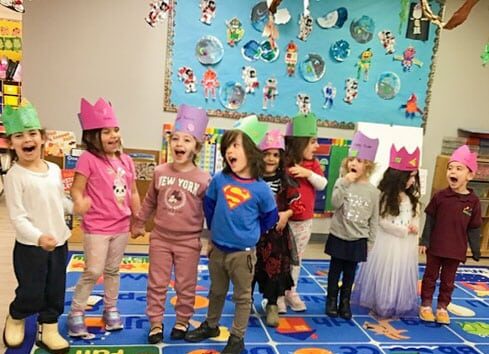
Why is STEAM Important
In preschool, STEAM activities are designed to be engaging, hands-on, and exploratory, catering to the natural curiosity and creativity of young children. These activities often involve open-ended challenges, allowing children to experiment, problem-solve, and collaborate in a supportive and stimulating environment.
Benefits of STEAM
We tailor our lessons to apply to each area of STEAM whether we’re using art to learn about bugs, using technology to learn about the world, or learning about engineering through play with toys. This holistic approach to early childhood education has many benefits, including the following.
- Inspires love for learning through hands-on exploration.
- Builds critical thinking and problem-solving abilities.
- Encourages creativity and innovative thinking.
- Establishes foundational skills for future academic success.
- Fosters collaboration and communication.
- Sparks curiosity and lifelong learning.
- Provides a supportive environment for real-world exploration.
- Prepares children for an ever-changing world.
STEM vs. STEAM
STEM (Science, Technology, Engineering, and Mathematics) education in preschool typically focuses on introducing basic scientific concepts like colors, shapes, and counting, along with simple engineering challenges such as building with blocks. STEAM education includes all of this, but expands it by integrating the arts into the learning process. For example, a STEM activity might involve sorting shapes or counting objects. At Woodcrest Preschool, we expand upon activities like this to include learning about where we can find these shapes in the world around us. We may also learn about an artist that uses distinct shapes, and create art projects in their style.
This approach not only reinforces mathematical and scientific concepts but also encourages creativity, imagination, and self-expression, fostering a more holistic and engaging learning experience for young children.
STEAM Activities for Preschoolers
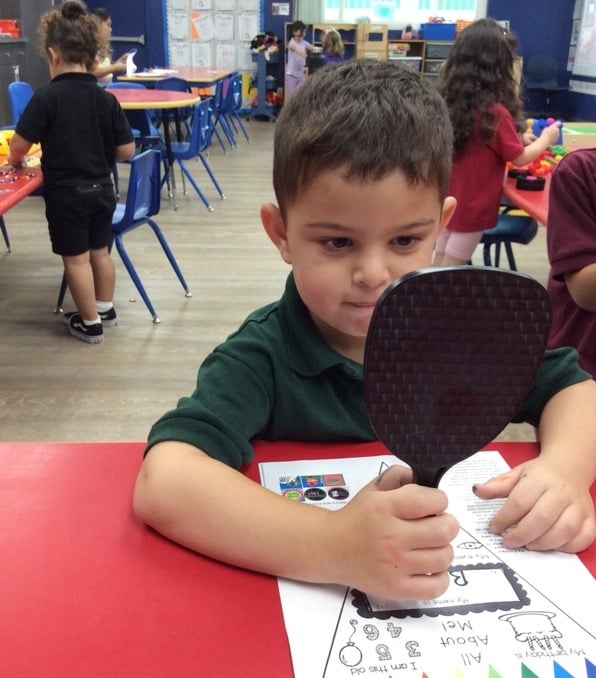
Learning All About Me With Mirrors
In this STEAM activity, children are provided with a mirror to closely observe themselves, promoting self-awareness and facilitating exploration of their sense of self. Through this experience, children not only engage in artistic expression, such as drawing or painting self-portraits, but also gain a deeper understanding of their own identities and emotions.
Exploring The World With Magnifying Glasses
Using magnifying glasses to look at different objects is a fun STEAM activity for kids. It helps them explore things closely and notice details they might not see with their naked eye. This activity encourages curiosity and helps kids learn about texture, color, and structure in a hands-on way.
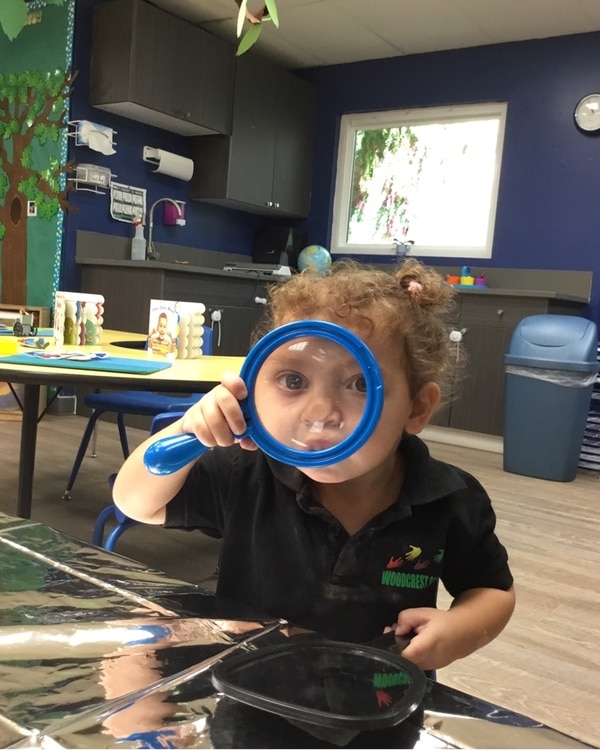
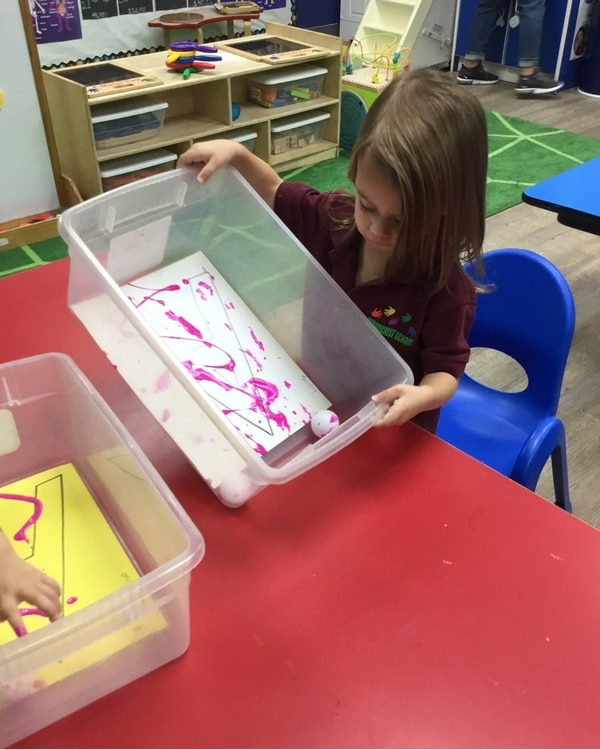
Creating Art With Shapes & Gravity
In this STEAM activity, children are given a bin with paper, paint, and ping pong balls. By rolling the balls around in the paint, children explore concepts like movement, slope, and gravity, while also creating unique art pieces. This hands-on experience not only engages their creativity but also helps them understand how objects interact with each other and their environment.
Using Technology To Teach Literacy
In this STEAM activity, children use technology to listen to a book being read while simultaneously following along with the text. This multisensory approach enhances literacy skills by reinforcing word recognition, comprehension, and fluency, while also integrating technology into the learning process.
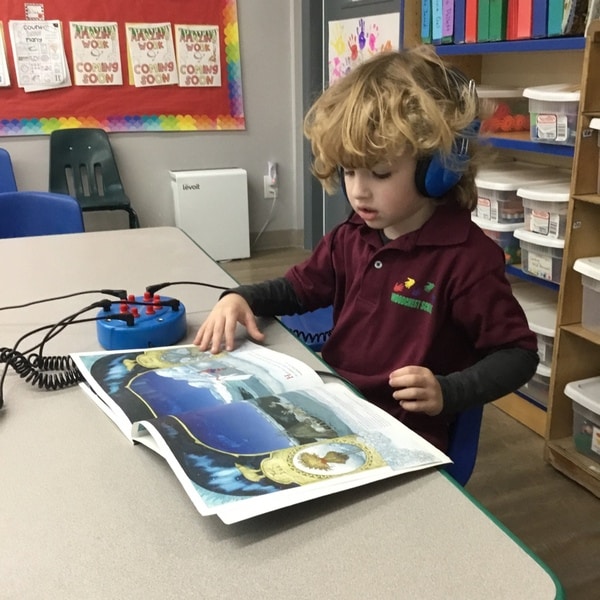
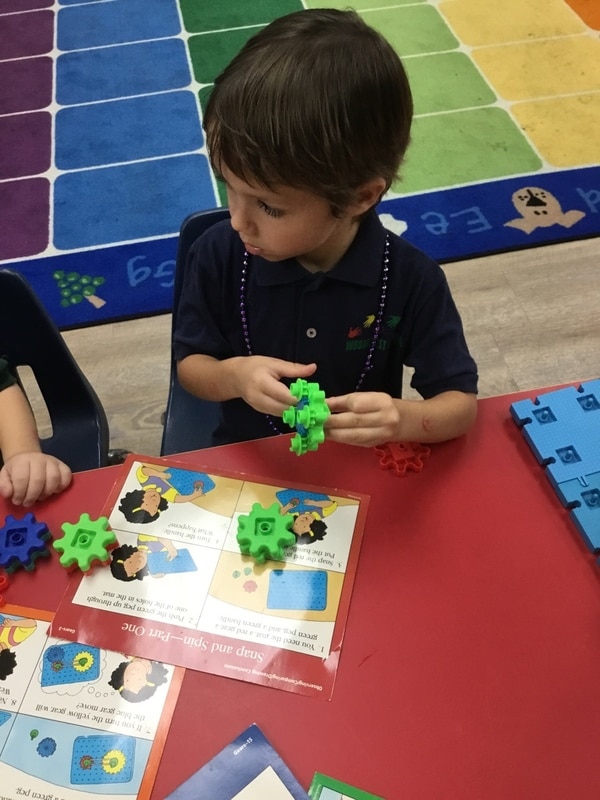
Snap & Spin Engineering
In this STEAM activity, students snap plastic gears together and spin them to explore engineering concepts and the interaction of shapes. By manipulating the gears, students gain hands-on experience with mechanisms and discover how different shapes and configurations affect movement and function. This activity fosters problem-solving skills and encourages critical thinking as students experiment with gear arrangements to achieve desired outcomes.
